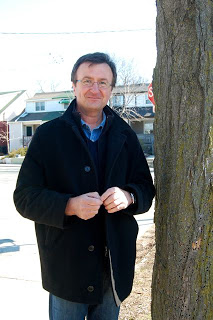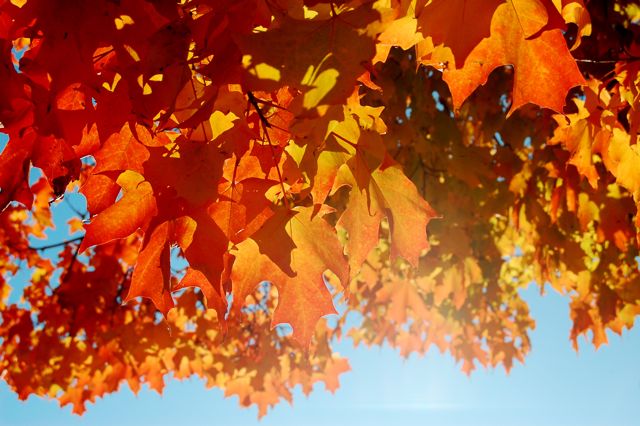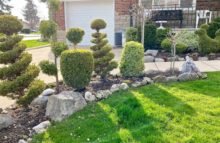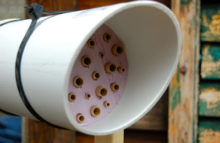There aren’t many native sugar maples on our street. Most are Norways. So I like to check in with our sugars from time to time, as you would an elderly neighbour.
About a week ago, I was horrified to note that the trunk of one across the street, whose rich leaf colours I’d photographed last fall,was drilled full of holes. Hundreds of them.
 What could it be? The holes were too irregular for woodpeckers — and the holes of Asian longhorn beetle tend to be larger; about the size of a dime. These were roughly the diameter of a pencil. Nevertheless, I could see what looked like insect shells inside.
What could it be? The holes were too irregular for woodpeckers — and the holes of Asian longhorn beetle tend to be larger; about the size of a dime. These were roughly the diameter of a pencil. Nevertheless, I could see what looked like insect shells inside.
So I fired off an email with photos to the City’s Urban Forestry department. Soon afterwards, Forest Health Care Inspector, Jozef Ric, kindly wrote me back with the goods:
“Thank you for looking after the tree and also for the good pictures. They show a number of woodwasp burrows on the dead or dying section of the tree. The woodwasp is likely a horntail (Tremex sp.). The larvae of this insects bore a pencil size holes in unhealthy or dying maples, elms oaks and other tree species. It is more a curiosity then a tree pest. The tree needs to be assessed for its condition.”
When Jozef came to inspect the tree a few days later, he was nice enough to meet with me. I used the opportunity to pump him full of tree questions. (More info to come in later posts.)
The sad news is that “my” sugar maple is a tree under stress. It’s planted in a strip of grass frequently used as a dog potty by local owners, and it’s their constant foot traffic as much as the acidic dog pee around its base that is helping to nudge the tree toward decline. Sugar maples (Acer saccharum) hate soil compaction around their root zone. The sandy soil in our area doesn’t help it
either. Sugar maples aren’t suited to sandy soils.
 And when a tree, or any plant, is st
And when a tree, or any plant, is st
ressed out, opportunistic pests like the Tremex woodwasp move in.
The good news is that the tree will be around for a few more years yet. Jozef estimated that more than 60% of the trunk was living tissue. He gave the tree four or five more years. Maybe more.
We’re going to keep our eye on this invalid, adding mulch to shelter the roots and watering it during dry spells. According to the City’s fact sheet, Trees Need Water, infrequent, deep soaking is the key to helping trees develop drought resistance.
We can’t do anything about the woodwasps — which, incidentally, don’t sting. Those long tails are ovipositors. But maybe we can keep this native tree around to glow for us each autumn just a little longer.






3 comments
Maybe you could put some plants or something around the base of the tree to discourage dogs and other traffic?
What a good post! I read it from A to Z. Interesting information, I learned something new. I’m also glad that my dogs don’t abuse any trees. Thank you!
Thanks, Tatyana! Glad you dropped by.